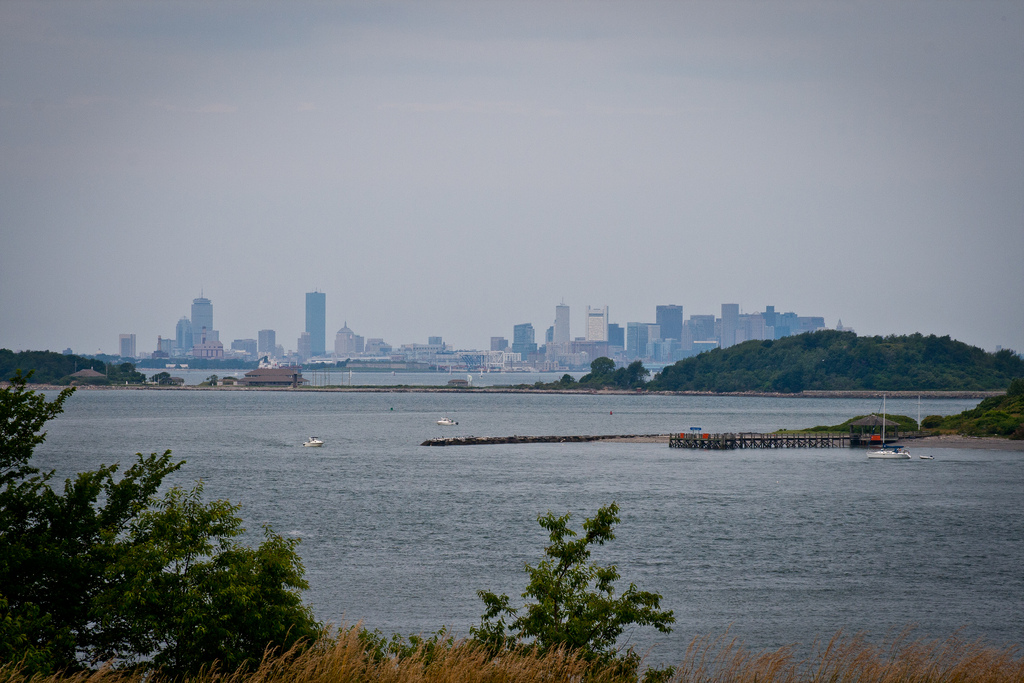
How fitting a week before the the launch of Boston’s Designing with Water design competition, the sky opened up over Boston and dumped flood-level rains all over the region. In fact, areas from Massachusetts’ North Shore as far south as the Jersey Shore experienced flooding, but that’s a mere taste of what’s to come over the next several decades.
A significant portion of Boston stands to one day sit underwater due to perpetually rising sea levels. Rather than try to combat this fact, a surefire losing effort, Boston-based design firm Sasaki Associates is advising the intrepid team of the Boston Redevelopment Authority, The Boston Harbor Association and Boston Society of Architects to launch a design competition to gather ideas on how Boston can not only survive the consequences climate change, but adapt to them.
The announcement for the design coincided with the publication of Designing with Water: Creative Examples from Around the Globe, by Sasaki and TBHA ,an examination of urban planning initiatives from around the world for the purpose of adaptability.
The Architecture Boston Expo (ABX), kicks off on Tuesday, October 28, at the Boston Convention and Exposition Center, while the charette commences on Wednesday.
Jason Hellendrung, a principal at Sasaki, told me the event will consist of a charette workshop lasting from 1 p.m. to 4 pm. during which he and his constituents will give an overview of Designing with Water, and outline the key principles and issues to address. Participants will look to create solutions for three problem sites in Greater Boston, though Hellendrung was unable to tell me where exactly those are at this point.
Though he admittedly didn’t have the numbers in front of him (he’s in New York City where he moderated a panel on infrastructure resilience), he told me registration is near full, if not already, with architects, engineers and city planners.
But what’s most promising about the event is Boston’s opportunity to become a worldwide leader in sea level rise adaptation thanks, believe it or not, to Hurricane Sandy.
You might recall back in the fall of 2012 when the lion’s share of the Eastern Seaboard of the United States was unforgivingly thrashed by the hurricane so powerful it was referred to as a superstorm. New York City was crippled for days on end while Boston, luckily, was unscathed. The brunt of Sandy bypassed our small corner of the coast.
Not responding in reactionary fashion as did, for example, New York City, puts Boston in a leadership position to react preemptively, and for other cities to follow suit.
“We can develop innovation through resilience that’s really focused for Boston,” Hellendrung said. “People can look to Boston as implemented examples down the road. It’s a challenge since we haven’t had to react to a disaster, we’re less focused.”
But given that some of Boston’s highest recorded tides have been recorded over the past 20 years, a reactionary response may simply be irresponsible.
“Water knows no boundaries; it doesn’t respect city limits or boundary lines,” he addd.
Stay tuned to BostInno to find out some of the best design renderings. Hopefully, we’ll all be a bit drier by that point.

